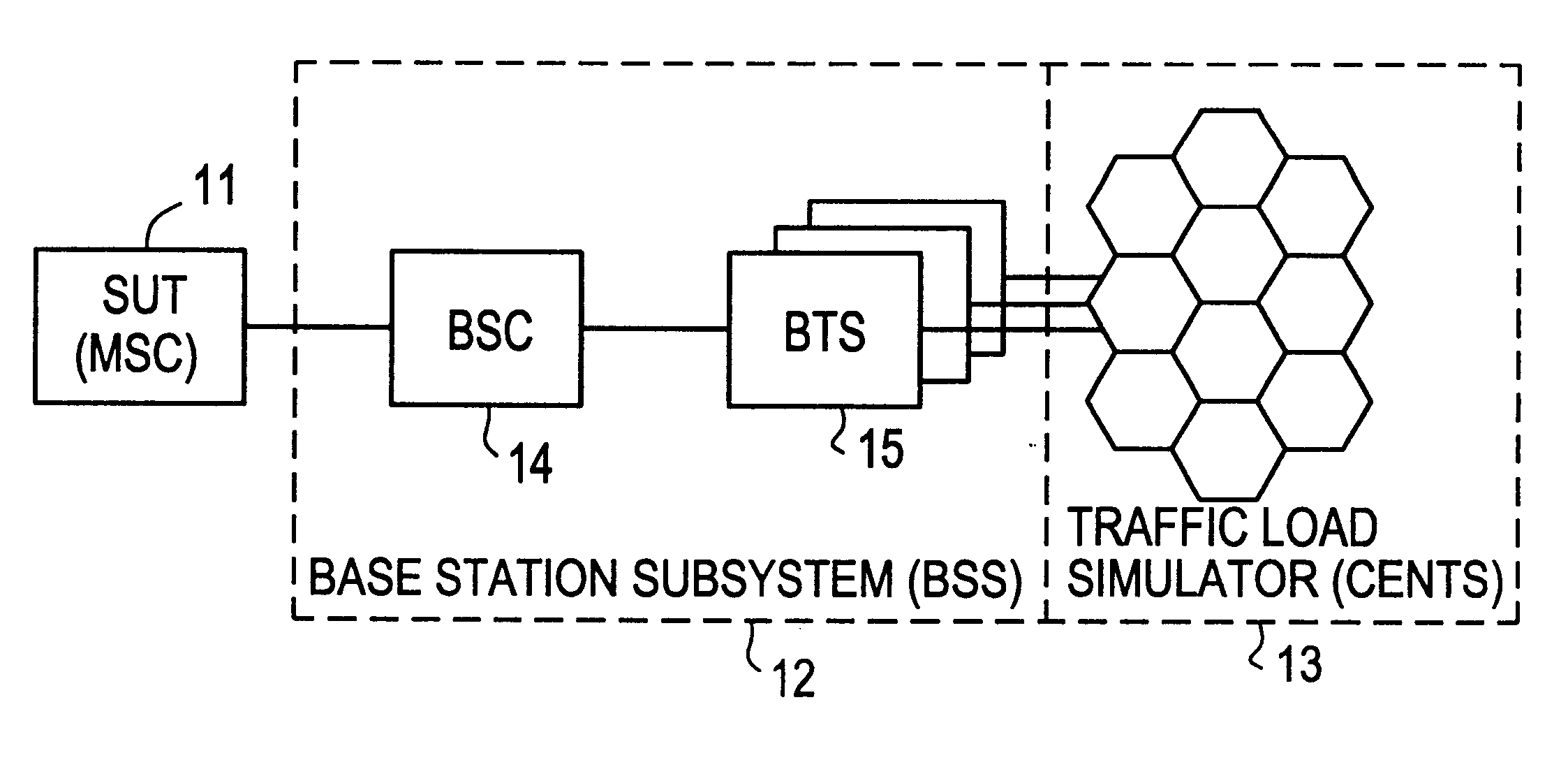Cellular network traffic simulator (cents)
a cellular network and traffic simulator technology, applied in the field of telecommunications networks, can solve problems such as difficult to discover system problems which may develop, limited real-time testing of new devices, and inability to share load by distributing subprocesses on different target machines
- Summary
- Abstract
- Description
- Claims
- Application Information
AI Technical Summary
Problems solved by technology
Method used
Image
Examples
Embodiment Construction
The present invention is a Cellular Network Traffic-load Simulator (CENTS) that supports generation of high levels of cellular traffic on multiple MSC's through a User-defined number of mobile stations. The CENTS system simulates actual traffic as it would appear in a cellular network over the air interface. The tool simulates the mobile station side of the air interface, and therefore is generic and can be used with any cellular network. In GSM, the CENTS system connects to the Base Station Controller (BSC). Different traffic patterns may be generated by changing traffic parameters within the CENTS system. This parameter-driven traffic generation increases the ability to reuse code when increasing traffic load. This also makes it possible to automatically generate a traffic mix based on, for example, actual traffic samples / recordings taken from customer networks, thereby reducing the need for time-consuming script / program updating.
CENTS includes a graphical user interface that supp...
PUM
 Login to View More
Login to View More Abstract
Description
Claims
Application Information
 Login to View More
Login to View More - R&D
- Intellectual Property
- Life Sciences
- Materials
- Tech Scout
- Unparalleled Data Quality
- Higher Quality Content
- 60% Fewer Hallucinations
Browse by: Latest US Patents, China's latest patents, Technical Efficacy Thesaurus, Application Domain, Technology Topic, Popular Technical Reports.
© 2025 PatSnap. All rights reserved.Legal|Privacy policy|Modern Slavery Act Transparency Statement|Sitemap|About US| Contact US: help@patsnap.com



